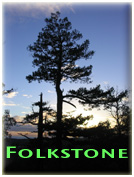
Community Wireless: Technologies
A New Wireless Web Link : January 23, 2003
IIn addition to being far faster than WiFi, EvDO can work over existing cell phone networks and deliver a connection anywhere there is a mobile phone signal. In contrast, WiFi users must be within 300 feet or so of a base station or "hot spot."
World’s Longest Wi-Fi Connection Made by The Swedish Space Corporation: December 12, 2002
Wireless broadband connectivity achieved over 310km using equipment from Alvarion…The information between the balloon and the base station was transmitted over the 2.4GHz spectrum (2480 Mhz which the SSC is allowed to use with higher ERP) with a stable signal strength of -68 dBm.
Watch
This Airspace:
The Economist, June 20, 2002
Wireless telecoms: Four disruptive technologies are emerging
that promise to render not only the next wave of so-called 3G
wireless networks irrelevant, but possibly even their 4G
successors
Teresa
Meng: An Entrepreneurial Academic:
May 21 2001
The founder and CTO of wireless networking provider Atheros
Communications splits her time between the startup and her work as
a Stanford professor.
LMDS
Wireless
With over 1300Mhz. of spectrum and a speed of 500 Mbps each way,
LMDS has changed the meaning of wireless broadband.
Mesh
Networks
… every subscriber device in the network to act as a router
and repeater for all other subscriber devices in the network. This
means that subscribers can "hop" through neighboring devices or
Wireless Routers to communicate with each other and reach network
access points. This Multi-Hopping™ capability creates a
robust meshed network that automatically routes around congestion
and line-of-sight obstacles, while improving throughput as
subscriber density increases.
Wireless
Broadband's Holy Grail?
June 21, 2002
Their "pretty big deal"? Inexpensive, wireless broadband that
could drive traditional cable and phone companies out of business.
That's because EtherLinx
has come up with a way to tweak inexpensive, readily available
wireless fidelity -- better known as Wi-Fi -- and extend its range
from mere feet to up to 50 miles at incredibly high speeds. The
data transfer rate has been successfully tested at 10 Mbps, but
when it reaches the market it will offer only 2 Mbps.
802.11b
U.S. Robotics Corp. Doubles the Speed of 802.11b wireless lan ( April 17, 2002 )
The three products use the ACX100 chip from Texas Instruments Inc. of Dallas. In addition to meeting the existing standard, the chip also supports a new modulation scheme developed by TI, called PBCC (packet binary convolutional code). It's this that gives the products the extra kick: even at lower speeds, PBCC provides better performance at greater distances, and it can also work at 22M bps.…For now, TI is the only supporter of the 22M bps PBCC-22 technology, which it had hoped to get adopted into yet another high-speed WLAN standard under discussion at the IEEE, 802.11g. However, the standards committee voted to use a rival modulation scheme, OFDM (orthogonal frequency division multiplexing) proposed by Intersil Corp. of Irvine, California, according to TI and Intersil. TI's PBCC-22 remains as an optional part of the still-unfinished standard, which means products will not have to support it.
802.11a
SkyCross Reference Designs for 5 GHz Wireless Networking ( April 4, 2002 )
SkyCross, a leading developer of advanced wireless antenna solutions, announced today that SkyCross and Magis Networks, Inc., a leader in 802.11a wireless chipsets, have agreed to co-develop reference designs utilizing SkyCross' 5 GHz antennas for use with Magis' Air5(TM)-based chipsets. Magis' products enable wireless broadband networks.802.11a: Making Space for Speed: Jan 8, 2001
When the IEEE ratified the 802.11a and 802.11b wireless networking communications standards in 1999, its goal was to create a standards-based technology that could span multiple physical encoding types, frequencies and applications in the same way the 802.3 Ethernet standard has been successfully applied to 10-, 100- and 1,000-Gbps technology over fiber and various kinds of copper. One year later, we have at our disposal a wide selection of 11-Mbps 802.11b products from a multitude of vendors. But what about 802.11a?Atheros Communications: Two-chip set, 802.11a 5GHz, 54+Mbps
September 5, 2001 Industry's First 802.11a WLAN Chipset Ships in Volume
August 30, 2001 Atheros Chipsets Used to Determine New Transportation-Based Wireless Standard, New 802.11a Range and System Capacity Paper Posted
UltraWide Band
IEEE 802.15 WPAN High Rate Alternative PHY Task: Group 3a (TG3a):
The IEEE 802.15 High Rate Alternative PHY Task Group (TG3a) for Wireless Personal Area Networks (WPANs) is working to define a project to provide a higher speed PHY enhancement amendment to 802.15.3 for applications which involve imaging and multimedia.Ultrawideband: $525M in 2007 : ( Jan 22, 2003 )
The nascent market for ultrawideband chipsets will grow from just 100,000 units this year to 24 million units in 2007.Ultra-WideBand Players Step Up Activities : ( Nov 11, 2002 )
Since the FCC's limited approval of UWB commercial applications in February 2002, UWB players have shifted into turbo mode. These companies have scrambled to complete development on products that match the specifications, and also to unite on standards activities. UWB players focusing on the commercial markets include XtremeSpectrum, General Atomics, Time Domain, Discrete Time Communications and Pulse-Link.
Ultra Wideband Stringly Represented in WiMedia Alliance
Nine technology companies have formed the WiMedia Alliance. According to the members the Alliance is a not-for-profit open industry forum. It was formed to develop and adopt standards-based specifications for connecting personal area wireless multimedia devices including ultra-wideband UWB . The founding member companies include international leaders in the wireless networking consumer electronic and semiconductor industries.Ultra Wideband Planet
Resources for ultrawideband buisiness and technology.Ultra Wideband the Ultimate Disruptive Technology ( Jun 11, 2002 )
…"If it came out two years ago, it would have been a slam dunk!" said Sabharwal. "Now it has to compete against WLANs." That has a lot to do with why the companies who are receiving the VC funding, like Time Domain and Xtreme Spectrum, are now solidly focusing on the home-networking advantages of the technology, and playing down the caged threat that UWB really makes on almost all wireless technology existing today. VCs are pretty conservative today, and home networking is where the funding is for this infant commercial technology.Ultra Wideband (UWB) Frequently Asked Questions (FAQ)
Multispectral Solutions, Inc. is pleased to provide responses to the following list of Frequently Asked Questions about Ultra Wideband (UWB) technology.Wireless Data Blaster ( Scientific American 2002 )
Radio's oldest technology is providing a new way for portable electronics to transmit large quantities of data rapidly without wires...
There are still some among us who can remember, before 1920, when "spark was king." With help from semiconductors and the Internet, spark-gap radio's latter-day offspring--UWB technology--may soon emerge as a major wireless building block for advanced high-speed data communications.UltraWide Band Working Group
The Ultra Wideband Working Group has been established as an unofficial association of industry leaders and scholars with interest in UWB technology, as well as issues related to commercialization.History of UWB Communications May 3rd, 2001
• A Brief History of UWB Communications
• Early Motivations and History of Ultra Wideband Technology
• History of UltraWideband (UWB) Radar & Communications: Pioneers and Innovators
• An Early History of Nonsinusoidal Electromagnetic TechnologiesUltra Wide Band Tutorials: Ultra Wideband (UWB) systems transmit signals across a much wider frequency than conventional systems and are usually very difficult to detect. The amount of spectrum occupied by a UWB signal, i.e. the bandwidth of the UWB signal is at least 25% of the center frequency. Thus, a UWB signal centered at 2 GHz would have a minimum bandwidth of 500 MHz and the minimum bandwidth of a UWB signal centered at 4 GHz would be 1 GHz. The most common technique for generating a UWB signal is to transmit pulses with durations less than 1 nanosecond.
Ultrafast wireless technology set to lift off Aug 27, 2001
Later this year, the Federal Communications Commission will decide whether to give the green light to so-called ultra-wideband transmission. If approved, UWB could have a dramatic impact on short-range wireless communications for the enterprise.Center For Ultrawide Band Research and Engineering
The Center for Ultra-Wideband Research and Engineering develops knowledge, facilities, and expertise in the field of Ultra Wideband Impulse Radio technologies. By establishing relationships with key industry and educational players, CURE expands its knowledge base, infuses information regarding Ultra Wideband Impulse Radio technologies into the University educational system, and disseminates research results to the scientific community. CURE serves as a repository for the knowledge base and integrates developed technology into cutting-edge solutions.ITS Programs and Projects US Department of Commerce
Ultrawideband (UWB) Signal Characterization Project
A Project for Developing Measurement Methods and Characterizing the SignalsUltrawideband (UWB) Signal Characterization Project
The National Telecommunications and Information Administration (NTIA) has developed a program to determine technical facts related to UWB emissions and associated electromagnetic compatibility issues. The organizations responsible for this effort within NTIA are the Office of Spectrum Management (OSM) in Washington, DC and the Institute for Telecommunication Sciences (ITS) in Boulder, CO. Some measurements will also be performed by the National Institute of Standards and Technology (NIST) in Boulder, CO.FCC TAC Spectrum Working Group updated Mar. 11th, 2001
This web site contains files developed by or describing the activities of the Federal Communications Commission's Technological Advisory Committee's working group on spectrum management (SWG).
Fixed Wireless
Fixed
Wireless Definition:
The point-to-point signal transmissions occur through the air
over a terrestrial microwave platform rather than through copper
or fiber cables; therefore, fixed wireless does not require
satellite feeds or local phone service. The advantages of fixed
wireless include the ability to connect with users in remote areas
without the need for laying new cables and the capacity for broad
bandwidth that is not impeded by fiber or cable
capacities.
802.16
IEEE Standard:
"Air Interface for Fixed Broadband Wireless Access Systems"
"The standard makes highly efficient use of bandwidth and
supports voice, video and data applications with the quality that
customers demand."
